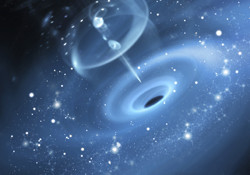Strong gravity beyond general relativity
Physicists working on the EU-funded ASTRONGR project sought to probe strong gravitational fields where deviations from general relativity may appear. They used black holes as 'cosmic laboratories' to test the so-called strong-field regime of Einstein's theory. The structure of these compact objects was investigated using different theories of gravity, the scalar tensor theories. Although the current theoretical model of black holes is consistent with general relativity, it may not be consistent with these extensions of Einstein's theory. Indeed, the ASTRONGR scientists carried out a series of calculations for black holes surrounded by matter. They uncovered different mechanisms through which black holes become unstable as a result of perturbations around them. In the future, observations from instruments that can record gravitational waves could back up the ASTRONGR scientists' findings. On the other hand, existing astronomical observations of spinning black holes helped them test a fundamental aspect of the Standard Model and allowed the researchers to set the most stringent constraint on the mass of photons that is estimated to be a hundred billion of billion times smaller than the neutrino mass. In addition, ASTRONGR scientists set theoretical constraints on the fraction of dark matter hidden in primordial black holes. Specifically, they ruled out the possibility that dark matter is made up of these black holes formed when dense regions of the early Universe collapsed gravitationally. Their multiple discoveries are described in 22 papers published in international peer-reviewed journals, including the prestigious Physical Review Letters and Physical Review D. ASTRONGR scientists also presented their findings at major scientific conferences held in Canada, Italy and Japan. The ASTRONGR project has broadened our knowledge of the origins of gravity. Black holes and other compact objects such as neutron stars do not only carry the imprint of possible corrections to general relativity, but also reveal an elusive link between gravity and quantum mechanics. Motivated by the advent of gravitation alwave astronomy, the ASTRONGR project has paved the way for new studies.
Keywords
Gravity, general relativity, black holes, gravitational waves, neutron stars



